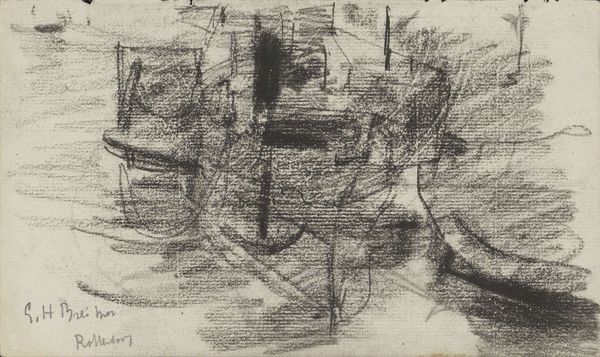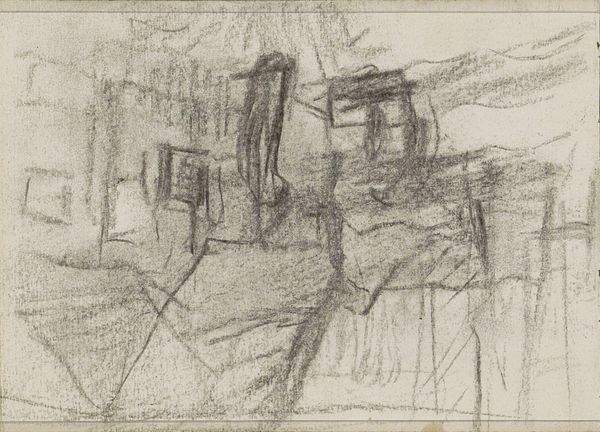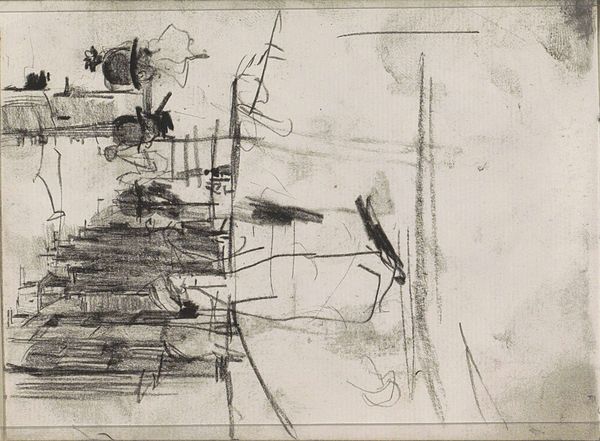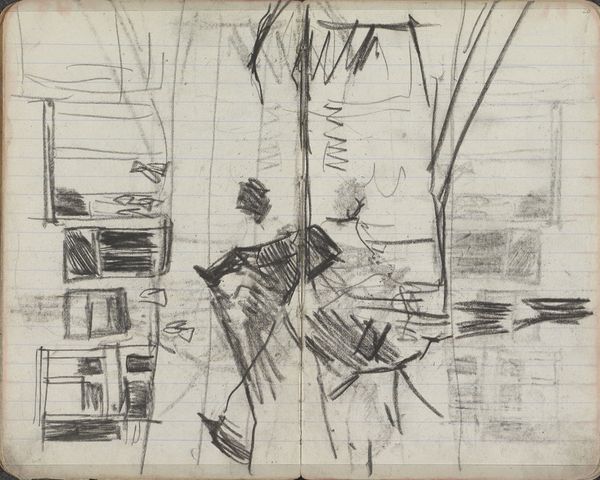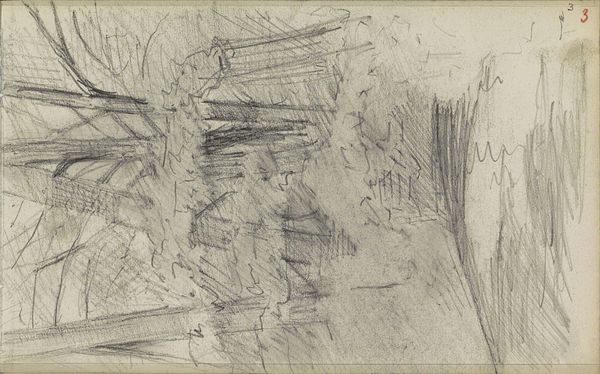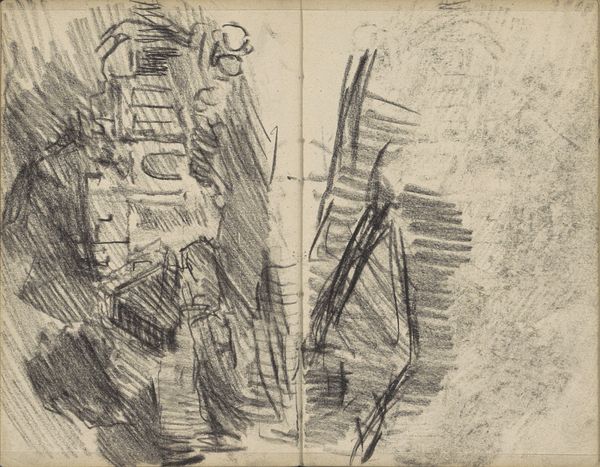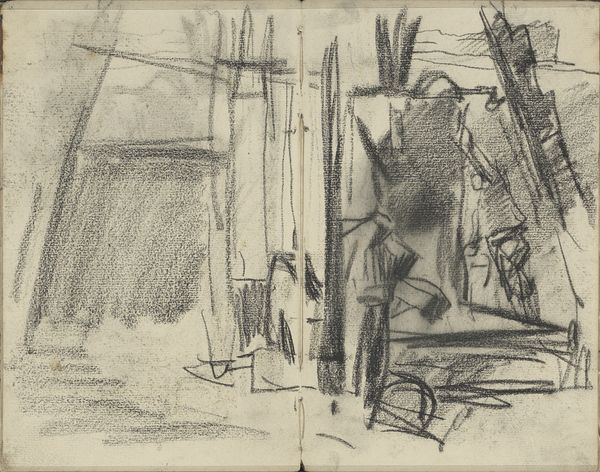
Copyright: Rijks Museum: Open Domain
Johan Antonie de Jonge sketched "Figure Beside an Object in a Landscape" using graphite, in what appears to be the early 20th century. The drawing presents an interplay between representation and abstraction, inviting an emotional response rooted in both recognition and mystery. The scene is rendered through dense networks of lines, hatching and cross-hatching. A dark, vertical, rectangular form occupies the left foreground; next to what might be a figure stands next to it. Behind these, a more loosely defined landscape emerges, full of tree trunks and foliage. The graphite marks vary in pressure and direction, creating a texture that animates the surface. De Jonge's use of line and form does not merely depict but rather constructs a visual experience that destabilizes conventional perception. The drawing does not offer a clear narrative, instead it operates as a sign – a semiotic prompt for interpretation. The ambiguity of the subject matter allows for multiple readings, reflecting a broader modernist concern with the subjective nature of reality. This interplay between line, form, and ambiguity invites us to consider how art challenges fixed meanings.
Comments
No comments
Be the first to comment and join the conversation on the ultimate creative platform.




